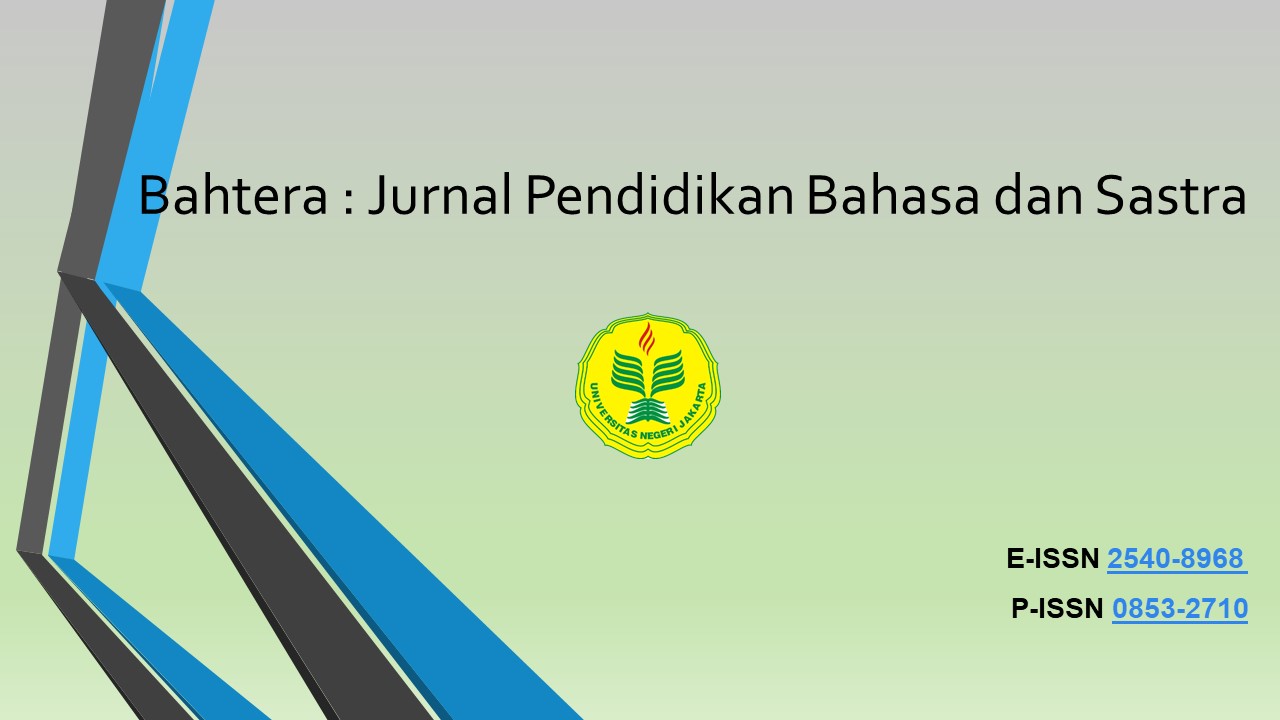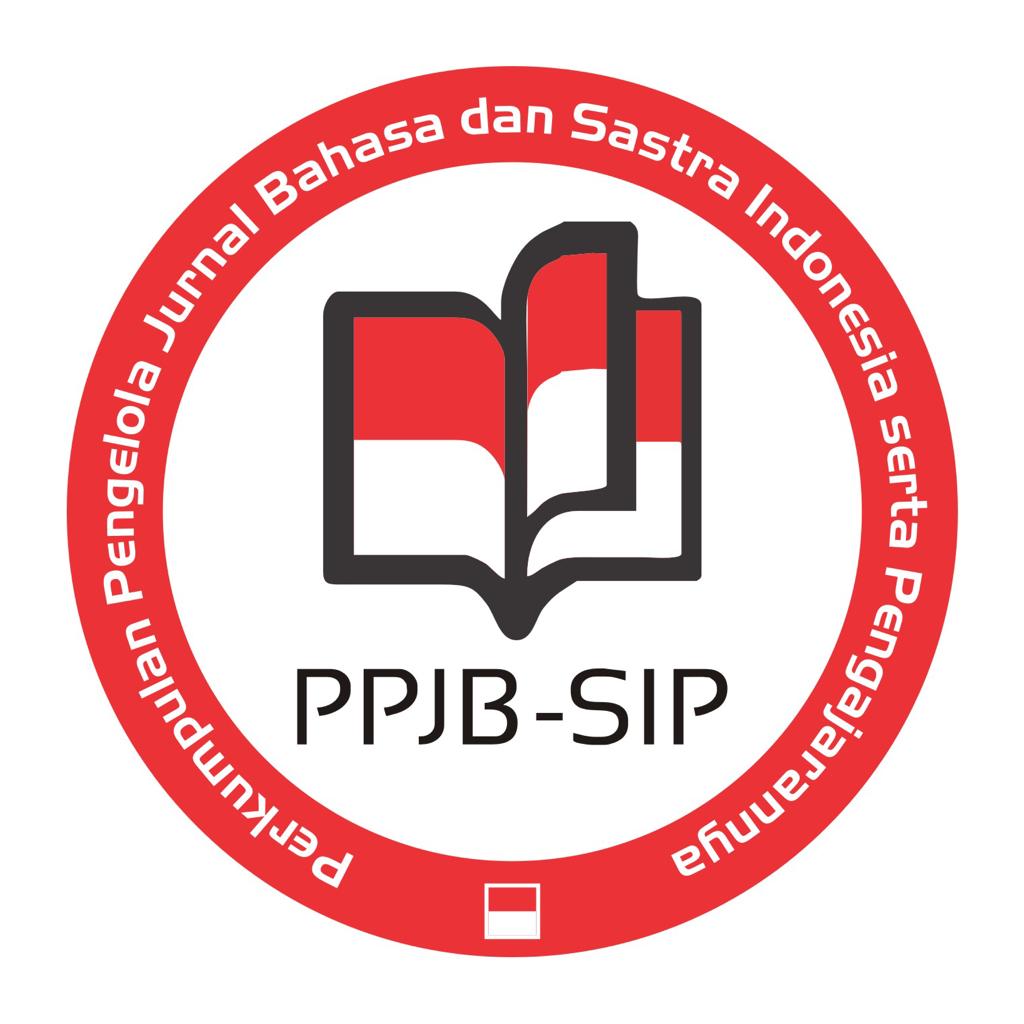ETHNOGRAPHY OF COMMUNICATION: THE ANALYSIS OF DELL HYMES'S SPEAKING IN BALINESE WEDDING PROPOSAL
DOI:
https://doi.org/10.21009/bahtera.192.01Keywords:
Ethnography of communication; Dell Hymes’s SPEAKING; Balinese; wedding proposalAbstract
ABSTRACT
The present study conducted a qualitative descriptive method regarding ethnography of communication to analyze a Balinese wedding ceremony of a Balinese couple using Dell Hymes’s SPEAKING mnemonic. The research resulted that there was a relationship between speech event regarding Balinese wedding proposal and Dell Hymes’ SPEAKING mnemonic. The results showed that Balinese wedding proposal of a Balinese couple was held in Bale Dangin (setting) and people sat in a semicircular including father, mother, sibling, and also some close relatives such as grandparents, aunts, uncles, and so on (participants) to make an agreement to hold a wedding ceremony (ends). The sequenced of the proposal was started by proposee’s spokesman who delivered the opening then it was continued by the proposer’s spokesman (act of sequence). They were all in serious situation (key) by the use of code-mixing in delivering the speech (instrumentalities) to ensure about their commitment to live together (norms of interaction and interpretation). The genre was proposal which showed serious claim of reasoning of an action.
Keywords: ethnography of communication; Dell Hymes’s SPEAKING; Balinese; wedding proposa
References
Bauman, R., & Sherzer, J. (1975). Ethnography of speaking. Annual Review of Anthropology, 4, pp. 95-119. doi: https://doi.org/10.1146/annurev.an.04.100175.000523
Bonvillain, N. (2016). The Routledge Handbook of Linguistic Anthropology. New York: Routledge.
Carbaugh, D., & Boromisza-Habashi, D. (2015). Ethnography of Communication. The International Encyclopedia of Language and Social Interaction, 1–16. doi:10.1002/9781118611463.wbielsi119.
Goman, C. K. (28 November 2011). How Culture Controls Communication. Forbes https://www.forbes.com/sites/carolkinseygoman/2011/11/28/how-culture-controls-communication/#21388221 263b.
Hadisaputra, I. N. P. & Adnyani, N. L. P. S. (2012). The influence of Balinese culture on EFL university students speaking ability. Lingua Scientia, 19(2), 13-26. doi: 10.23887/ls.v19i2.16060.
Hymes, D. (1967). The anthropology of communication. Human communication theory: Original essays, ed. by Frank E.X. Dance, 1-39. New York: Holt, Rinehart and Winston.
Hymes, D. (1972). Models of the Interaction of Language and Social Life, In Gumperz, J. J. & Hymes, D. (eds). Directions in Sociolinguistics: The Ethnography of Communication. New York: Holts Rinehart & Winston, pp. 35-71.
Hymes, D. (1974). Foundations in Sociolinguistics: An Ethnographic Approach. Philadelphia: University of Pennsylvania Press.
Lofland, J. (1995). Analytic ethnography. Journal of Contemporary Ethnography, 24(1). 30–67. doi:10.1177/089124195024001002.
Matei, M. (2009). The ethnography of communication. Bulletin of the Transilvania University of Brasov, 2(51), 155-162.
Morgan, N. (1 September 2015). We Humans Are Social Beings – And Why That Matters For Speakers and Leaders. Forbes https://www.forbes.com/sites/nickmorgan/2015/09/01/we-humans-are-social-beings-and-why-that-matters-for-speakers-and-leaders/#30ad7b926abd.
Petrova, Y. A. (2016). Ethnography of communication. Гуманитарные и социально-экономические науки, (2), 88-90.
Philipsen, G. (1982). The qualitative case study as a strategy in communication inquiry. The Communicator, 12, 4-17.
Ray, M. & Biswas, C. (2011). A study on ethnography of communication: A discourse analysis with Hymes ‘speaking model’. Journal of Education and Practice, 2(6), 33-40.
Schwartz, H. & Jacobs, J. (1979). Qualitative Sociology. New York: The Free Press.
Schwartzman, H. B. (1993). Ethnography in organizations. Organization Studies, 14(4). 614-614. doi:10.1177/017084069301400419
Sherzer, J. (1977). The ethnography of speaking: A critical appraisal. Georgetown University Round Table on Languages and Linguistics, 43-57.
Siregar, M. A., Pardi., Asnani., & Hariani, S. (2018). Code-Mixing and Code Switching in Wylvera W.’s Novel Geranium Blossom: Saat Jarak Menguji Cinta: Their Types and Reasons. Paper presented at the 1st Annual International Conference on Language and Literature, KnE Social Sciences, (pp. 461–472). DOI 10.18502/kss.v3i4.1956.
Stablein, R. (1996). Data in organization studies. In S. Clegg, C. Hardy, & W. R. Nord (Eds.). Handbook of organization studies, pp. 509-525. London: Sage.
Suandari, M. S. (2012). Communication analysis of men and women in ngayah activity at village temple of Panji village. Lingua Scientia, 19(2), 38-47. doi: 10.23887/ls.v19i2.16062.
Suparna, I. G. W. (2012). Politeness in Balinese and English. Lingua Scientia, 19(1), 41-54. doi: 10.23887/ls.v19i1.16058.
Suwija, I. N. (2017). Identification of anggah-ungguh kruna Balinese language. International Journal of Linguistics, Literature and Culture, 3(6), 14-21.
Swain, M. & Lapkin, S. (1998). Interaction and second language learning: Two adolescent French immersion students working together. The Modern Language Journal, 82(3), 320-337.
Tannenbaum, N., & Spradley, J. P. (1980). Participant Observation. Anthropological Quarterly, 53(4). 260. doi:10.2307/3318111.
Umezinwa, J. (2017). Analysis of a selected bargain discourse using Dell Hymes’ S.P.E.A.K.I.N.G model (Published Bachelor’s Degree thesis). Nasarawa State University, Keffi, Nigeria.
Downloads
Published
How to Cite
Issue
Section
License
License & Copyright
This work is licensed under a Creative Commons Attribution 4.0 International License.










